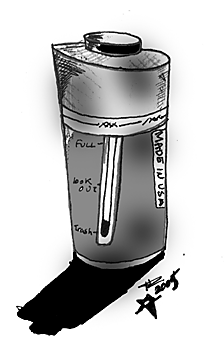
Illustration by Holly Randall
|
|
Arizona Daily Wildcat
Monday, January 31, 2005
Print this
Things you always never wanted to know
On the evening of May 21, 1927, Charles Lindbergh, flying the Spirit of St. Louis, landed in Paris 33 hours after his departure from Roosevelt Field in Long Island, NY, "The Lone Eagle" became the first person to fly non-stop over the Atlantic. He was awarded $25,000 and was given the largest tickertape parade ever by the State of New York.
Local dance enthusiast "Shorty George" Snowden was watching some of the dancing couples at New York's Savoy Ballroom dancing to swinging jazz. A newspaper reporter asked him what dance they were doing, and a newspaper with an article about Lindbergh's flight was sitting on the bench next to them. The title of the article read, "Lindy Hops The Atlantic," and thus was the "Lindy Hop" style of swing dance christened.
In 1936, Philip Nutl, president of the American Society of Teachers of Dancing, expressed the opinion that swing would not last beyond the winter. In 1938 Donald Grant, president of the Dance Teachers' Business Association, said that swing music "is a degenerated form of jazz, whose devotees are the unfortunate victims of economic instability."
As the music changed between the 1920s and 1990s, (jazz, swing, bop, rock 'n' roll, rhythm & blues, disco, country), the Lindy Hop, Jitterbug, Lindy and swing evolved across the United States with many regional styles.
Savoy swing is a style of swing popular in the New York Savoy Ballroom in the '30s and '40s originally danced to swing music. The Savoy style of swing is a very fast, jumpy, casual-looking style of dancing. Lindy style is a smoother-looking dance. West Coast swing emphasizes nimble feet popular in California nightclubs in the '30s and '40s, and was voted the California State Dance in 1989. East Coast swing is a six-count style of Lindy popular in the ballroom dance school organizations.
The active ingredients in each dose of Smooth Move laxative tea are 20 milligrams of Sennosides A and B, naturally occurring in the senna leaf contained in the blend. Senna is an herb traditionally used for its gentle regulating action.
In 1986, 138,000 tons of lead-acid batteries were disposed of in the United States.
Write a Letter to the Editor
|
